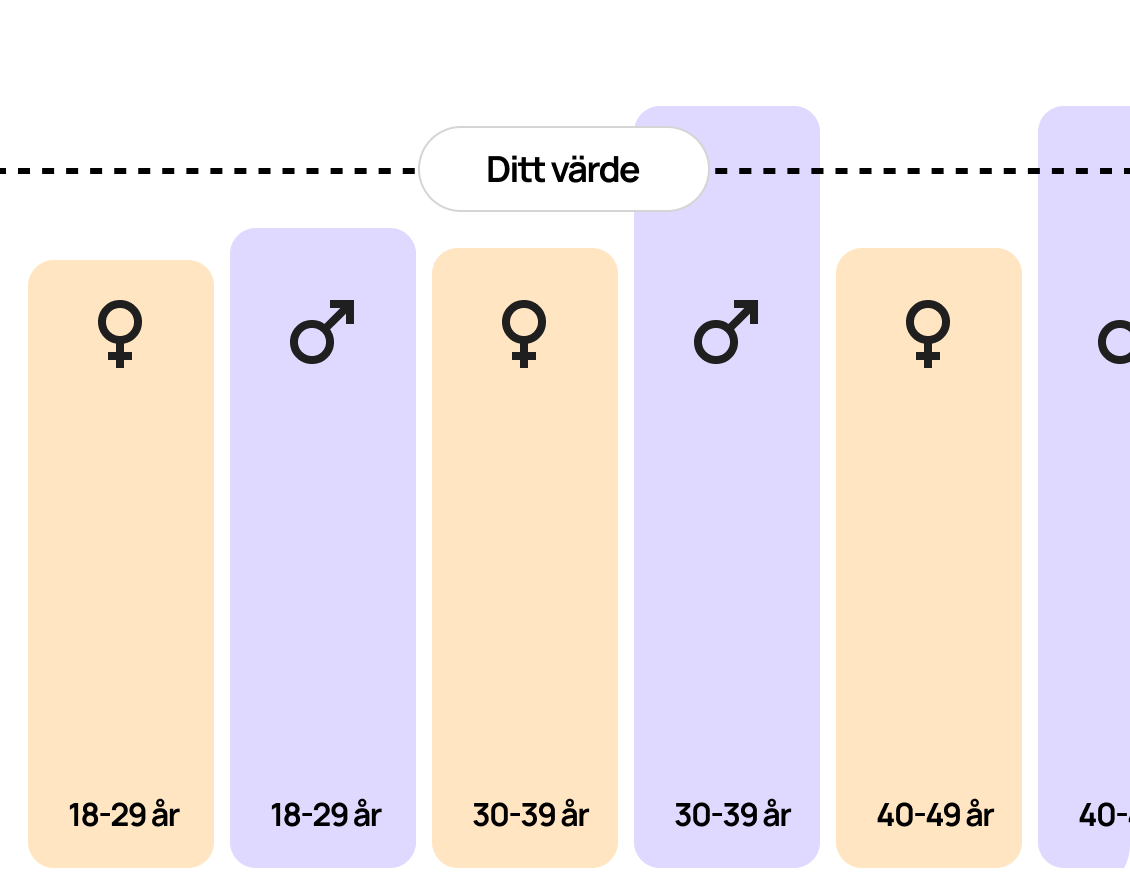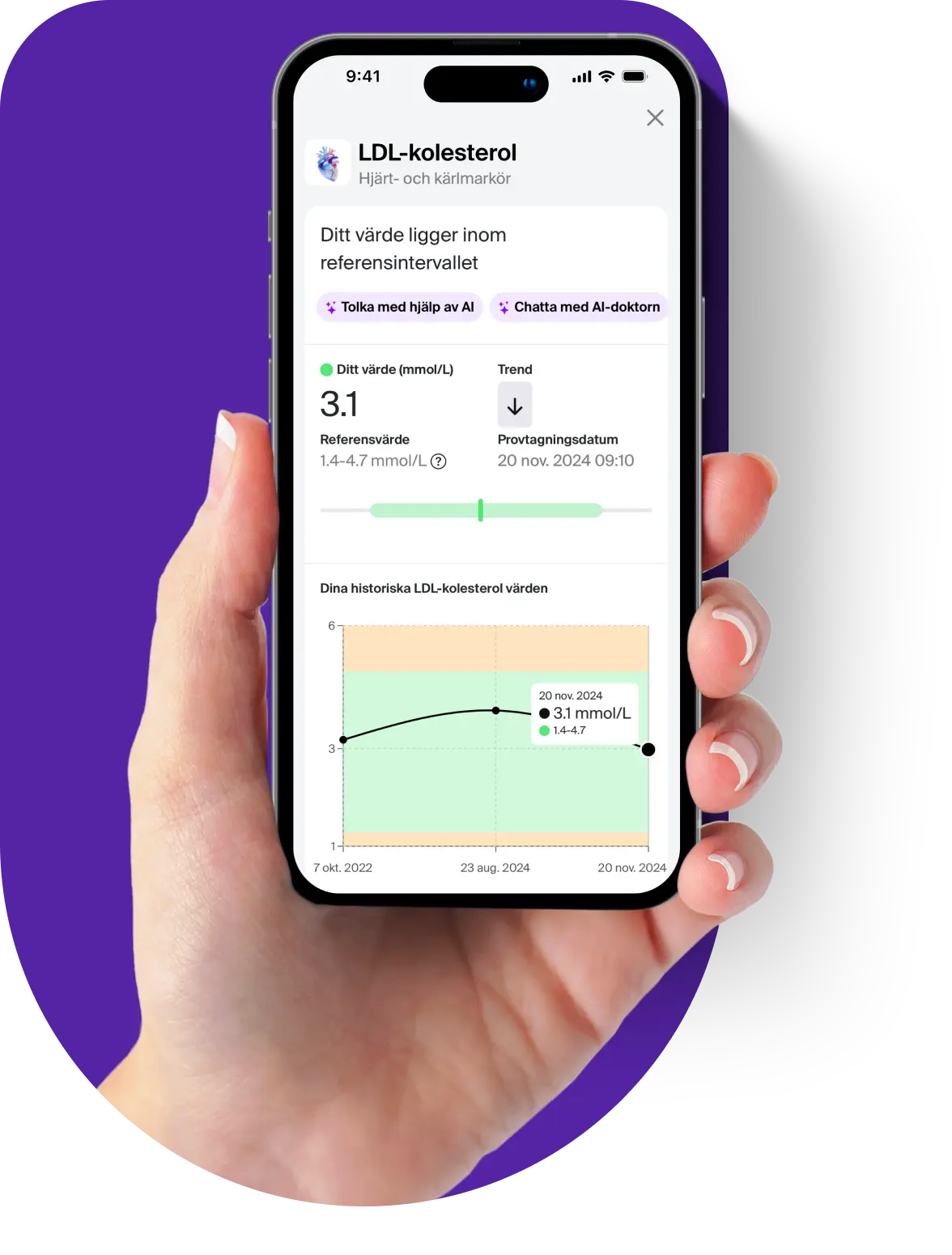Prostate check by blood test
PSA Plus includes two different blood analyses, both P-PSA and the ratio of free-PSA and total-PSA. The analysis provides an expanded picture of prostate health, which provides valuable information to identify and monitor conditions related to the prostate gland, for example benign prostatic hyperplasia (BPH), prostatitis or assessment of increased risk of prostate cancer. By checking the relationships between Total PSA and the ratio (Free/Total), the result can be used to possibly distinguish prostate cancer from other conditions such as benign prostate enlargement.
Functions of the PSA test
Total PSA: This test measures the total amount of prostate-specific antigen (PSA) in the blood, which includes both free circulating PSA and PSA bound to other proteins. Total PSA can be elevated in various prostate-related diseases, including cancer, but also in benign conditions such as BPH or prostatitis.
Free PSA: Part of the total PSA in the blood is in a free, unbound form. Interestingly, the proportion of free PSA relative to the bound PSA often increases in benign conditions, unlike prostate cancer where bound forms predominate.
PSA ratio: The ratio of free PSA to total PSA is a critical indicator used to improve diagnostic accuracy. A higher ratio of free PSA to total PSA is usually associated with non-cancerous conditions, while a lower ratio may indicate a higher risk of prostate cancer. This ratio is particularly useful for patients with marginally elevated PSA levels to determine the need for further investigations such as biopsy.
At what age is the PSA test recommended?
The PSA test is mainly recommended for men aged 50 or older. If you are over 40 with a family history of prostate cancer, you may also benefit from monitoring your prostate health through a checkup every two years. Note that the PSA test should be carried out regularly (once a year) in order to follow the development over time and to find disseminated prostate cancer at an early stage. For more information, you can read The care guide's brochure.
Why is analysis of the PSA ratio (free/total) important?
The PSA ratio (free/total) is an important indicator that helps distinguish between various prostate-related conditions, such as benign prostatic hyperplasia (BPH) and prostate cancer, especially when total PSA levels are only moderately elevated. This analysis is particularly useful because it provides more specific information about the different forms of PSA circulating in the blood. The ratio is not calculated when PSA levels are extremely high or very low because its relevance and precision are reduced in these cases. PSA can be elevated in several conditions, including prostate cancer, BPH, prostatitis (inflammation of the prostate), and acute urinary retention, which makes it difficult to empty the bladder.
Significance of an elevated PSA ratio (free/total)
An elevated PSA ratio (free/total) may indicate a lower risk of prostate cancer. When a greater proportion of circulating PSA is free, i.e. not bound to other proteins, it may be a sign of benign conditions such as BPH rather than cancer. Conversely, a lower ratio, where a greater proportion of PSA is bound to macromolecules, indicates a higher probability of cancer or inflammation of the prostate gland. This is because cancerous and inflamed prostate tissues tend to produce more complex PSA.
Summary and important information
By using the PSA ratio (free/total), you get a better basis for assessing the possible risk of prostate cancer with moderately elevated PSA values. Note!If your PSA value is outside the reference range, the ratio is not always calculated and only the total PSA value is answered from the laboratory.
Important information before reviewing your test result
Please note that the PSA ratio calculation is not performed if the total PSA value is lower than 2.0 µg/L or higher than 20 µg/L. This applies to all test results where total PSA is analyzed.
































